Registering your motorcycle is the first step for every new owner. Whether you’re processing the registration through your dealer or by yourself, you’ll need to get the LTO registration processed in order to get the Official Receipt and Certificate of Registration (OR/CR) before you can hit the open roads legally.
Also read: How to Register Motor Vehicle Car in LTO Online
Just like owning cars, owning a motorcycle comes with the responsibility of registering it at the Land Transportation Office (LTO) first. This legal obligation ensures road safety, proper identification, and contributes to organized traffic management. If you are curious about how it’s done, then, here’s a simple guide on motorcycle registration at the Land Transportation Office (LTO).
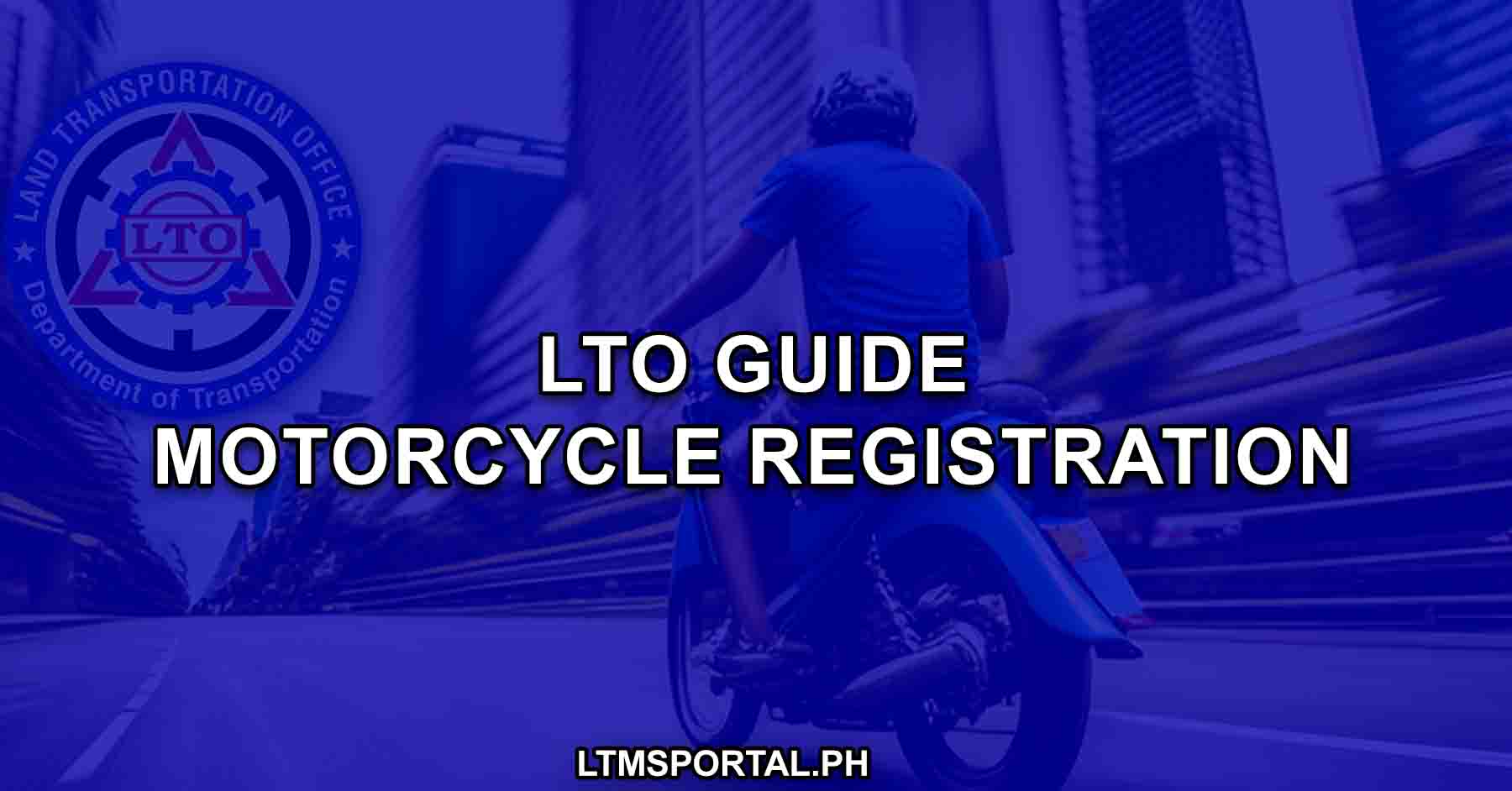
LTO Motorcycle (MC) Registration
LTO motorcycle (MC) registration refers to the process of officially recording and documenting a motorcycle and its ownership with the Land Transportation Office (LTO) in compliance with the Republic Act 4136 (Land Transportation and Traffic Code). It involves several steps, tests, and requirements, and is designed to ensure that the motorcycle meets safety standards, is properly identified, and is legally owned and operated. Additionally, motorcycle registration provides proof of ownership and helps in tracking vehicles in case of accidents, crimes, or other incidents.
Like other motor vehicle registrations with the LTO, it is important to note that motorcycle registration is not a one-time requirement. Since May 15, 2023, the validity period for all the initial registrations for motorcycles have officially become three years, instead of one. Beyond that, all motorcycle owners need to renew their registration annually according to their schedule to avoid penalties and legal consequences.
Key Components of LTO Motorcycle Registration
The process of getting an LTO motorcycle registration involves the following:
1. Documentation: Submitting necessary documents such as the Certificate of Stock Report (CSR), proof of insurance, and other specific requirements depending on the type and origin of the motorcycle.
2. Inspection: The motorcycle undergoes an inspection to ensure it complies with safety standards. This includes checking its roadworthiness and verifying important details such as the engine and chassis numbers.
3. Payment of Fees: There are various fees associated with motorcycle registration, including the Motor Vehicle User Charge (MVUC), legal research fund, plate costs, sticker costs, and other applicable fees.
4. Issuance of Official Receipt (OR) and Certificate of Registration (CR): Once the registration process is complete, the motorcycle owner receives an Official Receipt (OR) as proof of payment and a Certificate of Registration (CR) containing detailed information about the motorcycle.
5. License Plate and Sticker: The registered motorcycle is provided with a license plate and sticker for proper identification on the road.
MC Registration Validity Period
Originally, only motorcycles with engine displacements of 201cc and above, can have an initial registration valid for 3 years; for 200cc and below, it’s 1 year. Since May 15, 2023, even motorcycles with a displacement of 200cc and below can enjoy the 3-year validity for their initial registration. However, the succeeding renewals will still be valid only for one year, so motorcycle owners will need to renew their MC registration before it expires.
Benefits of MC Registration
Just like the car registration with LTO, MC registrations come with the following benefits:
- Easier Identification: Obtain a unique identifiers through a license plate and Certificate of Registration (CR).
- Proof of Ownership: OR/CR serves as indisputable proof of ownership.
- Safety Assurance: Ensures roadworthiness, reducing accidents.
- Legal Compliance: Avoid legal repercussions and ensure lawful ownership.
- Public Safety: Contributes to a sense of accountability, especially when it comes to violations on the roads.
- Prevention of Illegal Activities: Helps prevent theft, unauthorized use, and illegal sales.
Who Can Register?
Anybody can file for a motorcycle registration at the LTO though the most common clients for this procedure include:
- Accredited importers,
- MAIRDOE
- Dealers
- Individual motorcycle owners
Requirements for Initial MC Registration
To initiate the first motorcycle registration with the LTO, the initiator needs to prepare the following documentary requirements according to the type of motorcycle to be registered:
General Requirements
- Certificate of Stock Report (CSR)
- Proof of electronically transmitted appropriate insurance certificate of cover (CTPL)
- PNP-Highway Patrol Group MV Clearance Certificate
- LTO Client/Business ID
Additional Requirements
For Brand New Motorcycles:
- Original Sales Invoice
- Affidavit of Attachment for sidecar (if applicable)
For Brand New, Locally Assembled:
- Original Sales Invoice
- Payment Reference Number
Tax Exempt:
- Duly accomplished Motor Vehicle Inspection Report (MVIR)
- Certificate of Emission Compliance (CEC)
For Used, Imported Motorcycles
- Commercial invoice
- Duly accomplished Motor Vehicle Inspection Report (MVIR)
- Certificate of Emission Compliance (CEC)
How to Register your Motorcycle with LTO
For a step-by-step guide on how to register your motorcycle with the LTO, you can check this guide below:
Via LTMS Portal (for Individuals)
Step 1. Visit the official LTO LTMS portal.
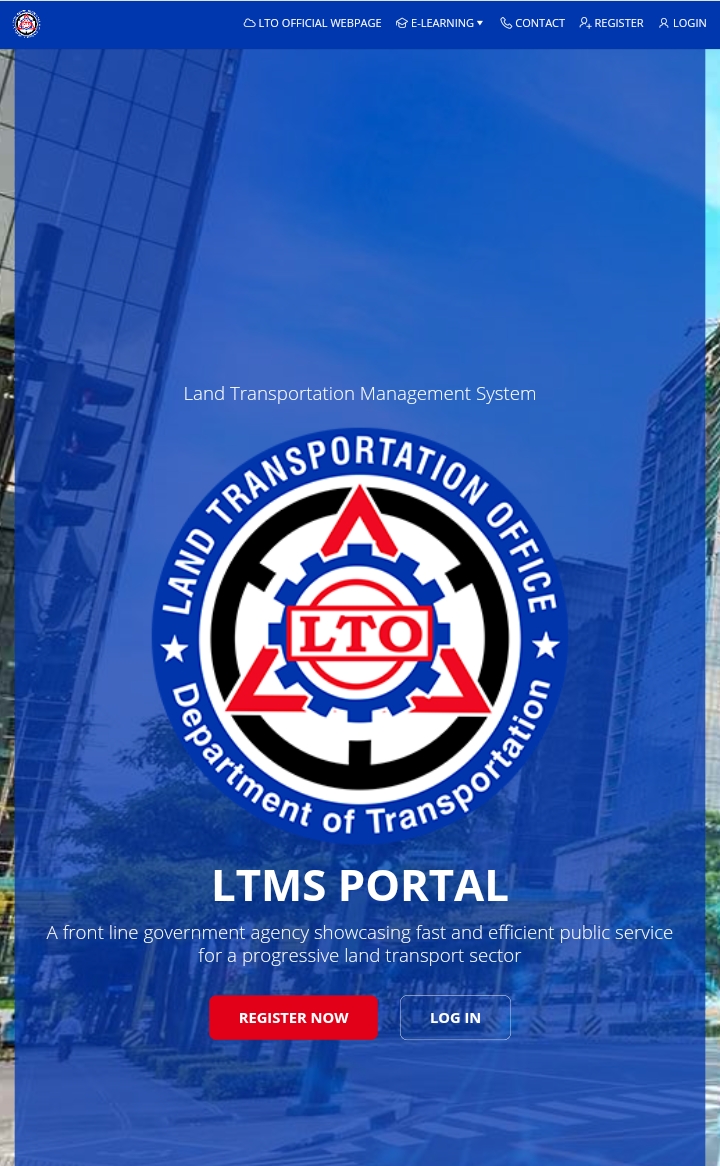
Step 2. Log in to your LTMS account and navigate to the Dashboard.
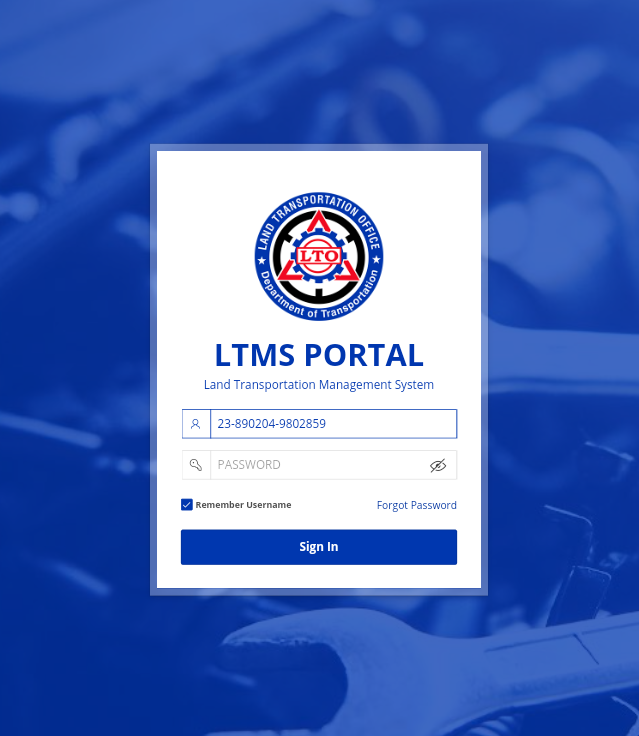
Step 3. Click Vehicle.

Step 4. Read the Terms of Use and click Agree.
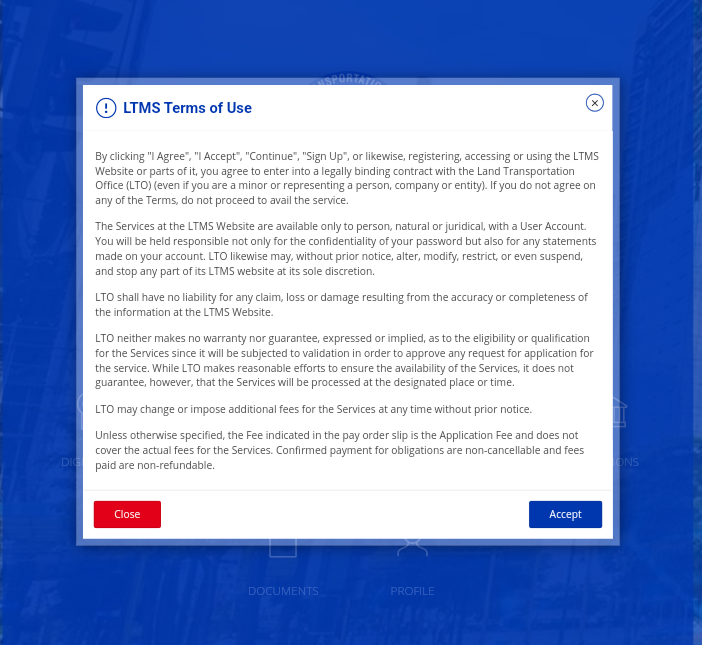
Step 5. Select your vehicle.
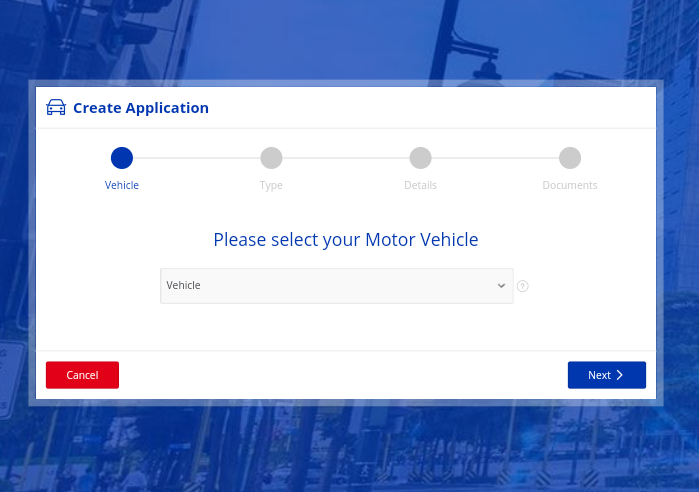
Step 6. Follow the rest of the steps, but make sure your vehicle is linked to your LTMS account first.
Via LTMS Portal (for Dealers and MAIRDOEs)
Step 1. Log in to the LTO MAIRDOE Portal.
Step 2. Upload the Sales Invoice, CSR, and other relevant requirements.
Step 3. Enter buyer details and complete the registration process.
Step 4. Make a payment and wait for the registration approval.
Step 5. Once approved, wait for the Issuance of OR/CR as well as the plates, stickers, and RFID stickers.
Using the Old System
Step 1. Visit your preferred Land Transportation Office (LTO) office.
Step 2. Submit the necessary documents to the Receiving Clerk who will then assess the completeness and authenticity of the submitted requirements.
Step 3. Wait for the evaluator to retrieve the motorcycle (MC) information from the system, generate a transaction ID, and encode details not cascaded from the MAIDRs (Motor Vehicle Information Database).
Step 4. Wait for the evaluator to approve the transaction based on the encoded details.
Step 5. Once approved, wait for the billing statement to be issued.
Step 6. Proceed to the Cashier for the payment of fees. For e-PAT payments, verify the Payment Reference Number through the Merchant Payment Inquiry Facility.
Step 7. Once paid, wait for the Cashier to print and issue the Official Receipt (OR).
Step 8. Wait until the encoding officer prints and the Chief of Office signs the Certificate of Registration (CR) for the registered vehicle.
Step 9. Present the OR to the Releasing Officer.
Step 10. Wait for the Releasing Officer to issue the Official Receipt (OR), Certificate of Registration (CR), sticker, plates, and RFID sticker to the vehicle owner.
Notes:
- Ensure that all original documents are presented during the process for verification purposes.
- If the client arrives at the office and the transaction was not completed within the day, he/she will be advised to return on the next working day and any incomplete transactions may be prioritized on the next working day.
Fees
The LTO fees associated with motorcycle registration include:
- Motor Vehicle User Charge (MVUC)
- Legal Research Fund
- Plate cost
- Sticker cost
- Science Tax
- Transfer Fee
- Penalty
- Convenience Fee
Processing Time
The estimated processing time is 1 hour, 30 minutes via LTMS and 3 hours, 15 minutes using the old system. It includes the waiting time and starts upon the submission of complete requirements.
Important Reminders
For your reference, here are some important reminders when registering your motorcycle with LTO:
- Renew as early as one month before the due date.
- Only use official Private Motor Vehicle Inspection Centers (PMVIC) for inspections.
- Follow conditions for online renewal via LTMS.
- Stick to the registration schedule.
- Late registration may result in fines or vehicle impoundment.
- Lost OR/CR can be replaced with a notarized Affidavit of Loss.
- If it is your first time to use the LTMS, you need to register for an LTMS portal account first.
Video Guide: How to Register your Motorcycle with LTO
For a visual guide on how to register your motorcycle with the LTO for the first time, watch this video from RedMoto:
Frequently Asked Questions (FAQs)
For more information, here are some common questions and answers related to motorcycle registration with LTO:
1. Can I drive without registration?
No, the “No Registration, No Travel Policy” is strictly enforced by the agency in the Philippines. Sure, you can drive, but be ready to pay hefty LTO fines and penalties when caught.
2. Can I transfer registration to another LTO DO?
Yes, but note that transferring to another LTO office comes with a Php100.00 charge for Change of Venue.
3. Can I change my motorcycle’s number plate?
No, this is not allowed. The plate number is permanent and unique for each motorcycle.
Summary
Registering your motorcycle at the LTO is crucial for legal compliance and road safety. Follow the outlined steps and adhere to important reminders for a successful registration process.
For more information, you may also reach out to the LTO via the following contact information:
Land Transportation Office (LTO)
LTMS portal: Visit the LTO’s official website and fill out their Contact Us form at https://portal.lto.gov.ph/ords/fp=PUBLIC_PORTAL:CONTACT_US:115716301949471.
Phone call: You may contact them at their telephone number (632) 922-9061 to 66.
Email: You may also send them an email at clientcare@lto.gov.ph.
LTO Text Hotline Service: You may use LTO’s nationwide SMS service for drivers and vehicle owners by typing LTOHELP and sending it to 2600
LTO office: For information, you may check with any of the LTO branch offices near you.